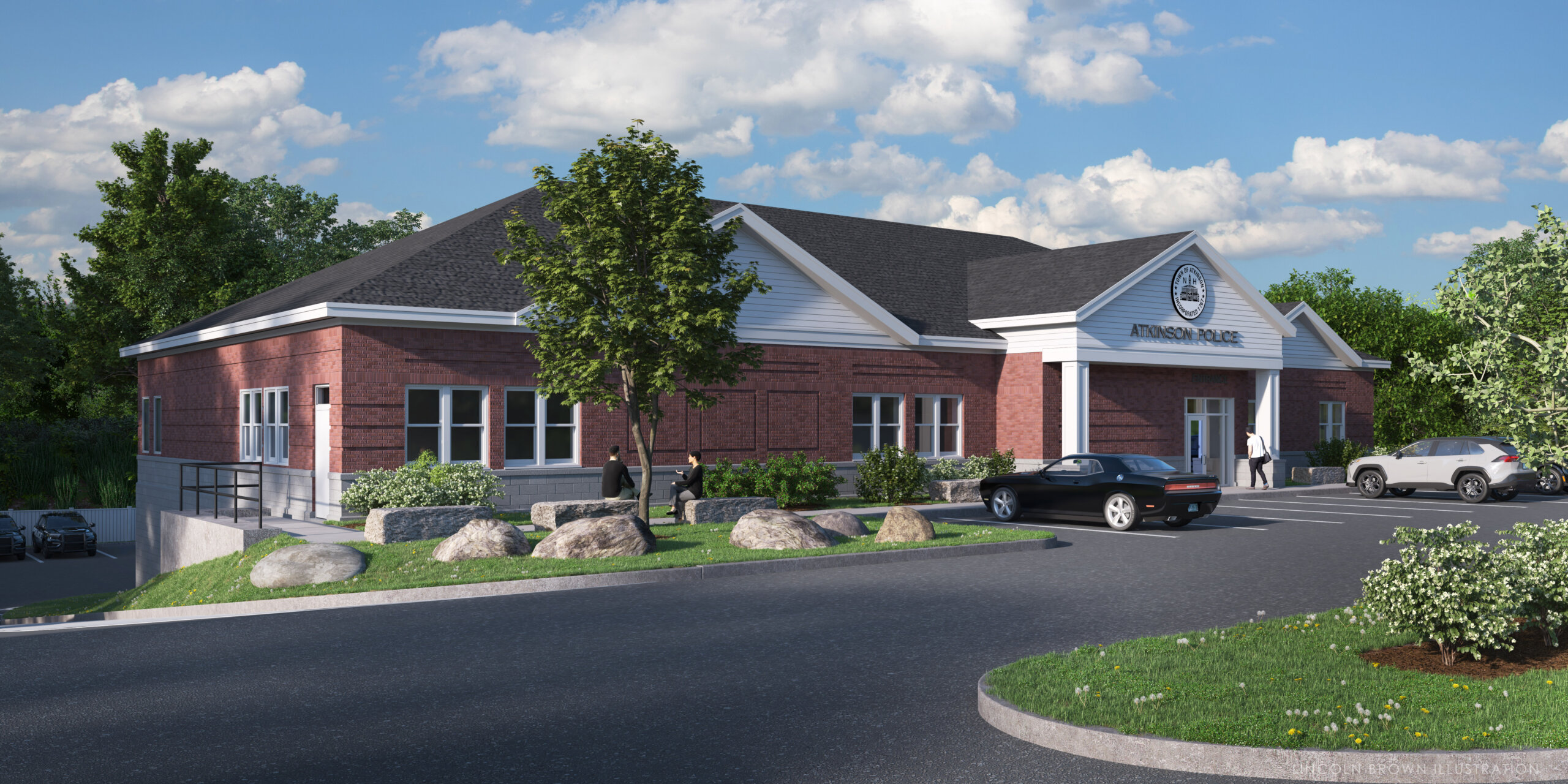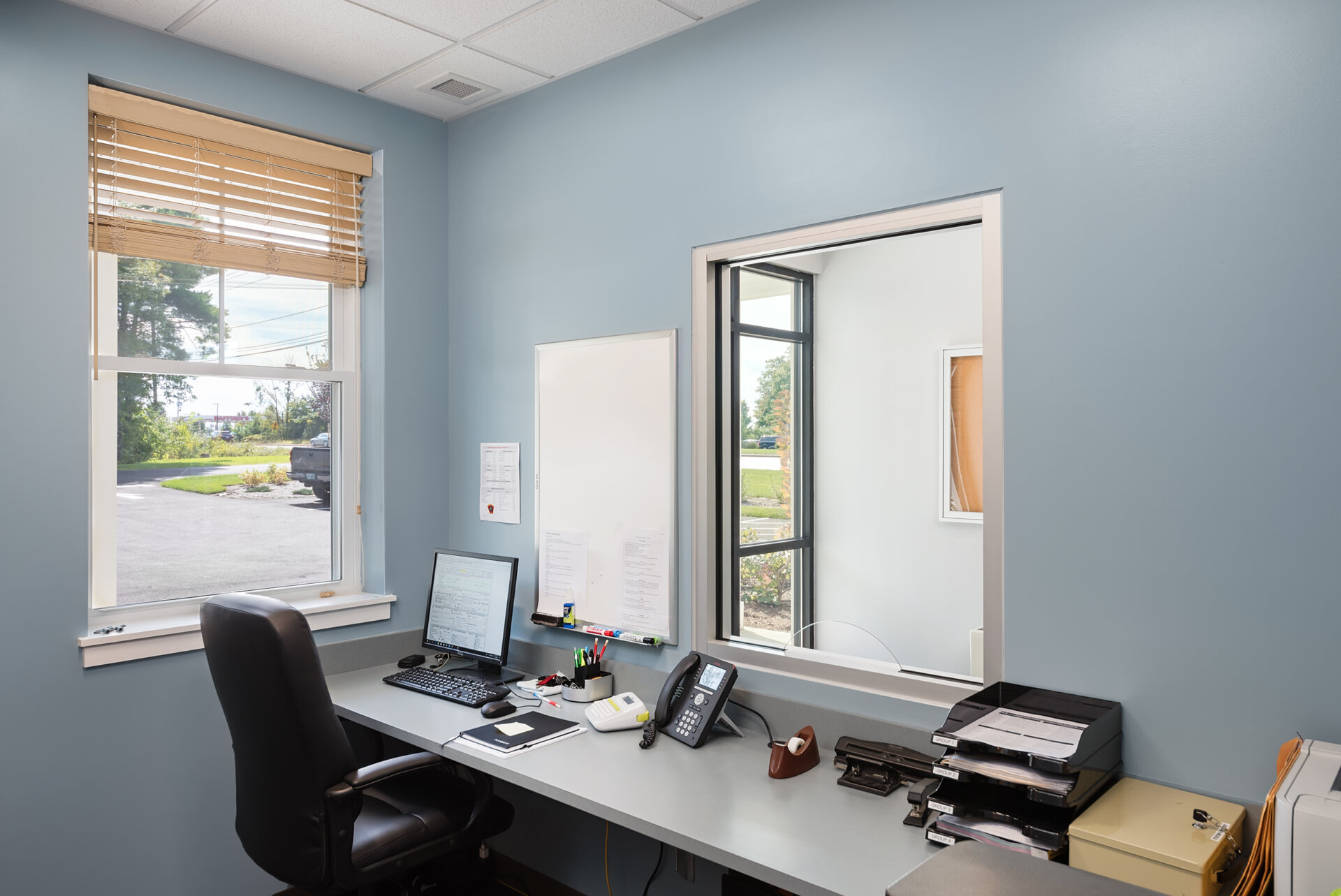Developing Municipal Facilities that Meet Your Community’s Needs
By William Gatchell, AIA
Senior Associate / Municipal Market Leader
Some call it the Law of More, or Taj Mahal syndrome.
It’s the perception that proposed municipal projects—like a new public safety complex or town hall—are inordinately lavish or contain features above and beyond what’s necessary to service a community. New city halls and public safety complexes sometimes draw criticism from residents and officials worried about cost. Many existing municipal buildings in New Hampshire aren’t designed to accommodate 21st century needs, and as time passes these needs only grow.
Justifying design choices to communities can be delicate. The conversation often falls to consulting architects and engineers or public officials to properly inform the public about the necessity of renovating or building a new municipal facility and justifying its price tag. A project criticized as “a Taj Mahal” is likely a significant improvement to a facility that fails to meet the basic operational needs of its users. It only seems fancy relative to the condition of aged municipal infrastructure. Addressing this criticism directly—by emphasizing that a well-designed facility meeting functional requirements for safety, professionalism, and longevity is the best way to meet modern safety or municipal needs—can help deflate community opposition and educate residents about what is really necessary to meet current and future needs.
Here are three strategies to address Taj Mahal syndrome.
Use the Ford Truck analogy. Municipal facility projects involve numerous decision makers—from administrators, public works directors, police and fire chiefs to community members—so a simple, consistent communications strategy is key.
Think of that new police or fire station or town office as a reliable Ford pickup truck: it’s designed to be a workhorse that comes with varying degrees of utility. An F150 is not embellished, nor is it inexpensive: it is designed practically to perform well and to last. This simple analogy can help address community concerns by enabling you to explain why a project is necessary.

Atkinson, NH Police Station offers the appropriate amount of increased space and updated services to meet their community’s needs.
Consider some typical municipal facility upgrade requirements:
- Fire stations must now accommodate larger trucks (that can carry more water) and provide spaces that better protect occupants’ health.
- Town offices need improved air quality requirements and better, ADA-compliant access for the general public as well as reasonable security measures such as separation of public and staff.
- Growing communities have more roads to plow and bigger fleets to meet the increasing expectations of residents. Public works facilities may need large vehicle bays to accommodate larger trucks with plow blades or loads of road salt, sand or brine.
Using the truck analogy, these upgrades will transform your municipal project into something like a Ford F-150 pickup, one that meets basic functional and performance requirements, not the luxury Super Duty F-250 Platinum. And a budget-conscious Ford Ranger is not going to be up to the task.
Share information beyond design and construction costs. Municipal projects have complex approval processes. These projects are typically bonded for 20 years, requiring designs that outlast the bonding duration and are long-term community investments; selecting the cheapest option is not the best value. There are sometimes hidden costs such as purchasing custom fire apparatus to fit in older fire stations or high liability for dangerous DPW maintenance areas. In fact, credentialed public safety facilities such as a CALEA-compliant law enforcement facility lowers a community’s liability insurance premiums. Many facilities have served their communities long after replacement was needed; towns often experience an artificially lower tax burden than if the facility was replaced, which typically comes at a premium.
Sharing information with the community and other decision-makers is vital to your project’s success. Identify your stakeholders, figure out the best way to reach them and invite them to conversations about your project. You may be reaching out to area business owners, neighborhood groups, and others who can involve their communities in your planning process. Engage your municipal employees in the process: they will directly benefit from the new project. Explain how this is an opportunity to build trust with the community, making the town more responsive to their needs.

Reception area at the Hudson, NH fire station, keeps staff spaces secure while conducting public business.
Bring experts to the table. Managing construction or renovation of government buildings, fire and police stations, and public works buildings requires an ability to juggle many priorities while establishing relationships with multiple stakeholders. As architects and engineers, we often step into this role for our clients, acting as their advocates during public meetings and presentations.
We not only bring building type expertise but curiosity and excellent listening skills; our goal during these gatherings is to understand the wishes and desires of community members so we can develop successful design solutions. Our job is to design a facility that meets the community’s needs and supports the operational goals of its users.
Architects and engineers can provide specialized expertise such as:
- Knowledge of code requirements for critical facilities such as public safety.
- Understanding a community’s changing needs and designing a new building accordingly. For example, public libraries are now community meeting spaces, hosting children’s and senior’s programming, providing training opportunities and more. The design team can facilitate rethinking how a municipality approaches its service to their community.
- Design the right amount of community access spaces and meeting rooms to serve the municipality without creating an excess of building square footage across the town’s facilities.
It may also be necessary to establish a lead decision-maker for your project, someone who can gather input from stakeholders and make sure everyone is clear on next steps, budgets and timelines. The extra effort you put into explaining your municipal project succinctly, reaching out to the community, and using experts to help communicate your goals will help it stay on track through the approvals process. And instead of the Taj Mahal, your constituents will be focused on the value of the community’s investment: a facility that meets its utility needs today and serves the community for decades to come.
This article appeared in the November/December issue of the New Hampshire Municipal Association New Hampshire Town & City Magazine.